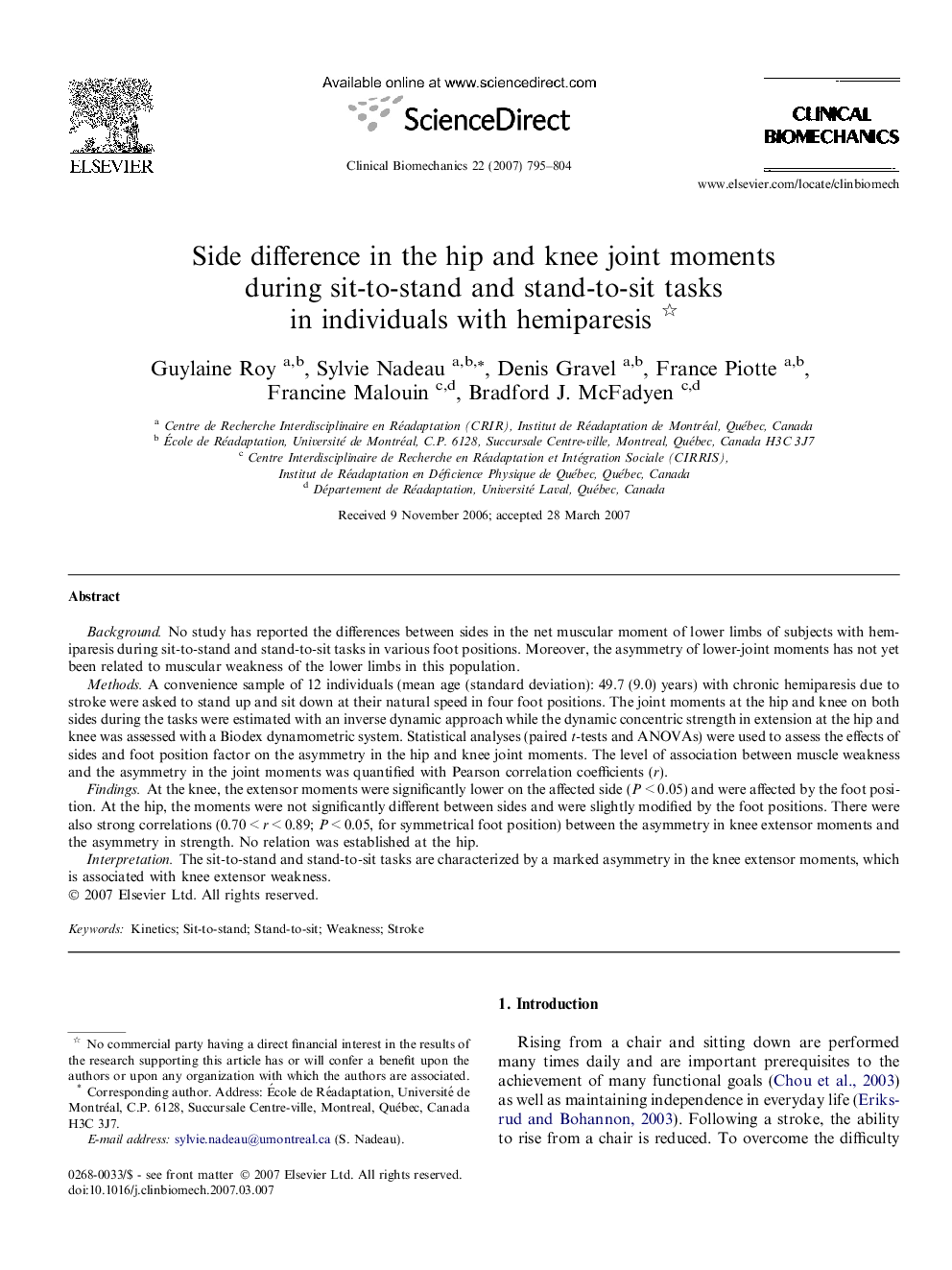| Article ID | Journal | Published Year | Pages | File Type |
|---|---|---|---|---|
| 4051261 | Clinical Biomechanics | 2007 | 10 Pages |
BackgroundNo study has reported the differences between sides in the net muscular moment of lower limbs of subjects with hemiparesis during sit-to-stand and stand-to-sit tasks in various foot positions. Moreover, the asymmetry of lower-joint moments has not yet been related to muscular weakness of the lower limbs in this population.MethodsA convenience sample of 12 individuals (mean age (standard deviation): 49.7 (9.0) years) with chronic hemiparesis due to stroke were asked to stand up and sit down at their natural speed in four foot positions. The joint moments at the hip and knee on both sides during the tasks were estimated with an inverse dynamic approach while the dynamic concentric strength in extension at the hip and knee was assessed with a Biodex dynamometric system. Statistical analyses (paired t-tests and ANOVAs) were used to assess the effects of sides and foot position factor on the asymmetry in the hip and knee joint moments. The level of association between muscle weakness and the asymmetry in the joint moments was quantified with Pearson correlation coefficients (r).FindingsAt the knee, the extensor moments were significantly lower on the affected side (P < 0.05) and were affected by the foot position. At the hip, the moments were not significantly different between sides and were slightly modified by the foot positions. There were also strong correlations (0.70 < r < 0.89; P < 0.05, for symmetrical foot position) between the asymmetry in knee extensor moments and the asymmetry in strength. No relation was established at the hip.InterpretationThe sit-to-stand and stand-to-sit tasks are characterized by a marked asymmetry in the knee extensor moments, which is associated with knee extensor weakness.
